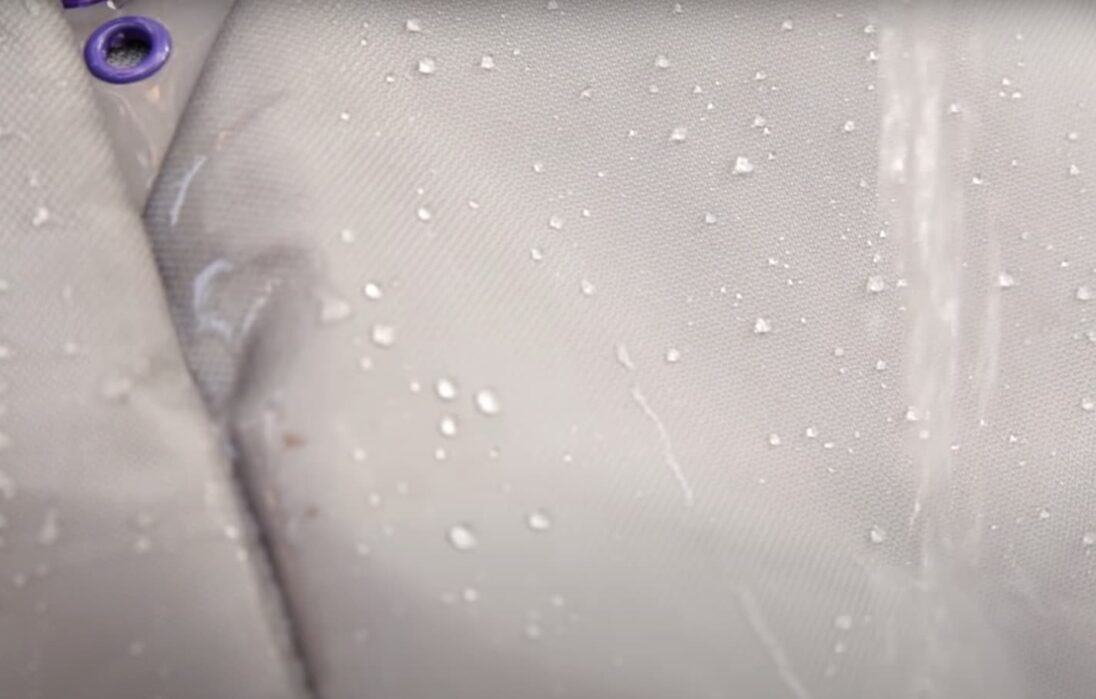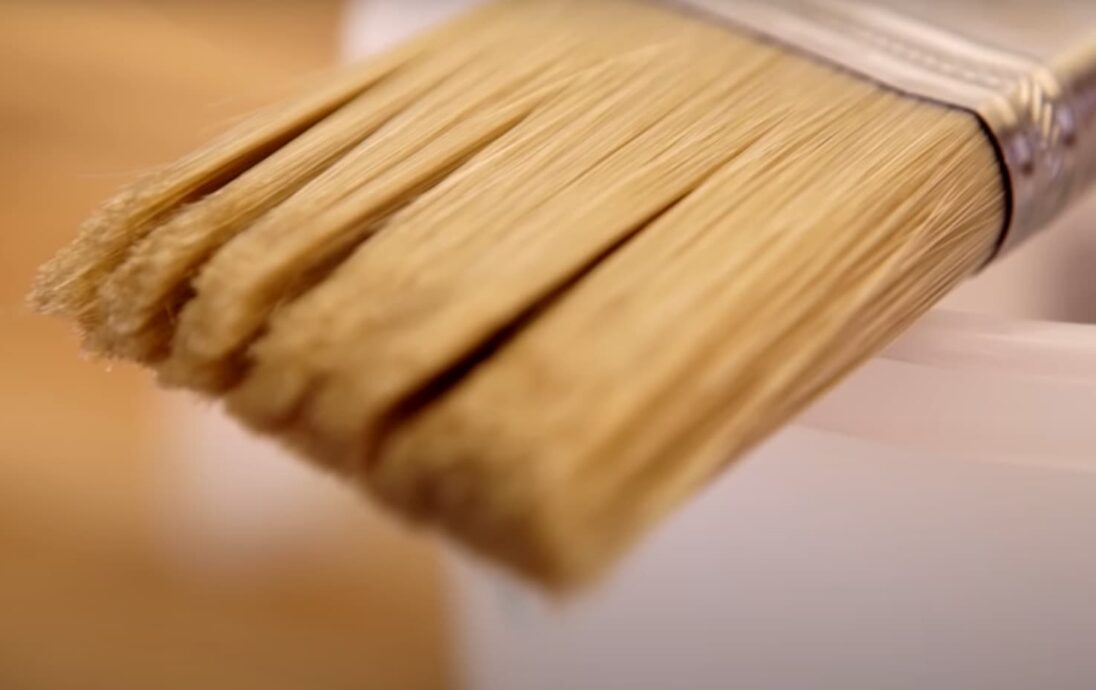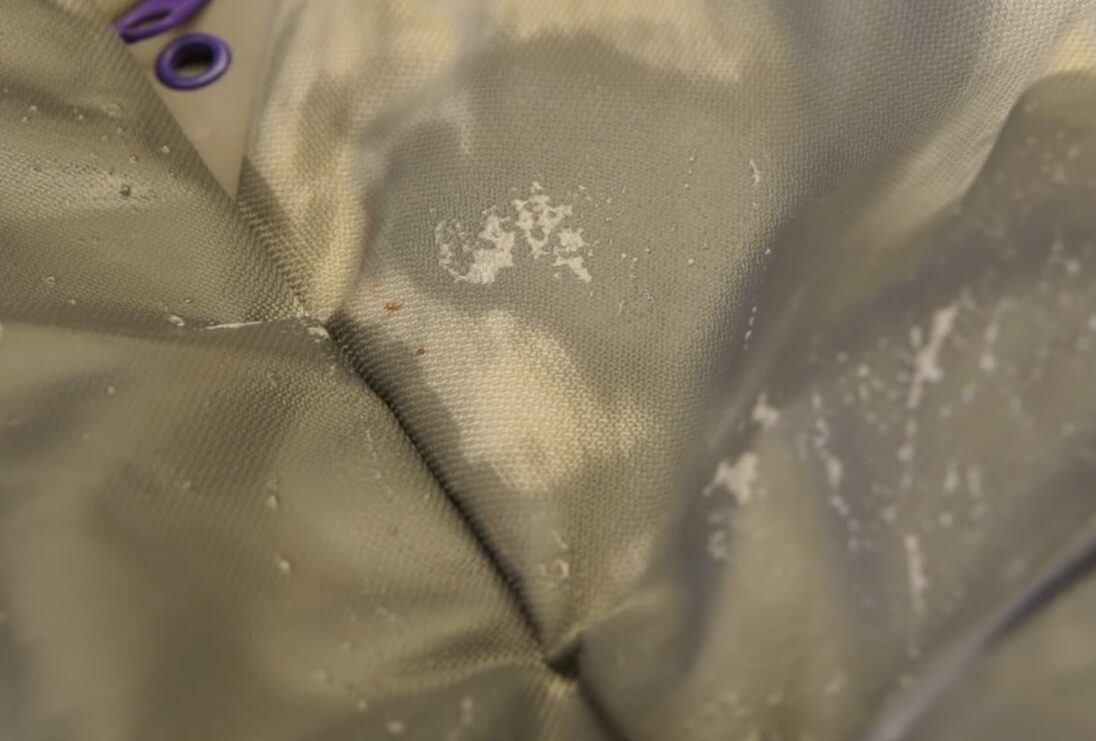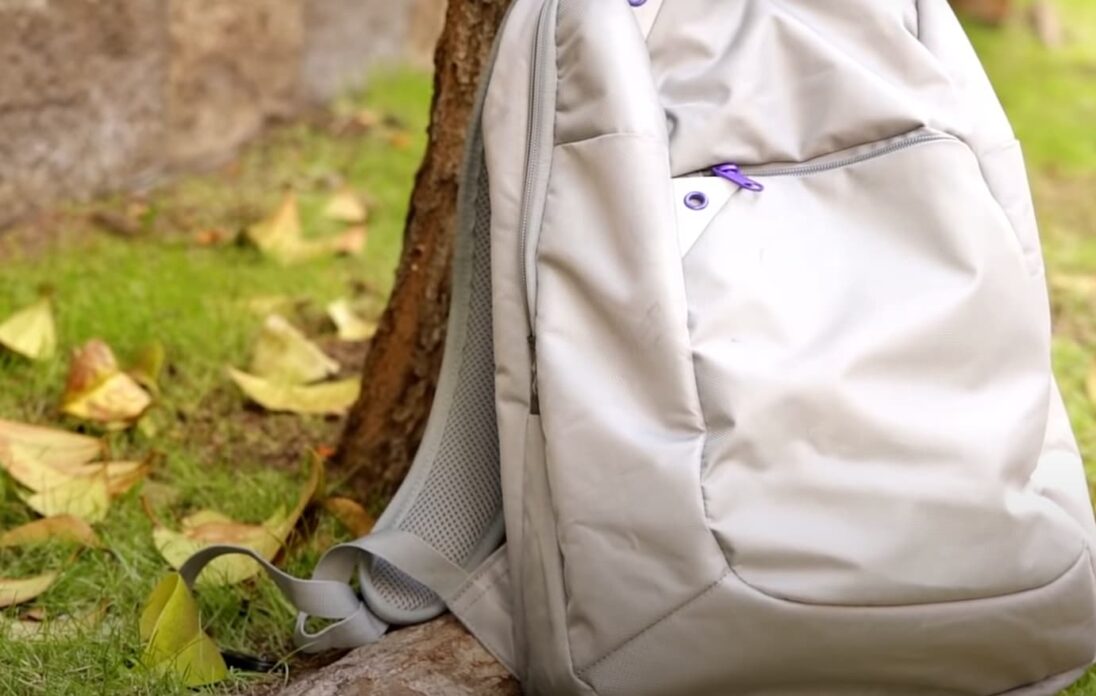If you’re like me, you hate having to worry about your belongings while on vacation. That’s why you should always make sure to waterproof your luggage before you go.
Here’s a quick and easy way to do it:
- Before you start, make sure your bag is clean and dry. If it’s dirty, the waterproofing spray won’t work as well. Once it’s clean, lay your bag out on a flat surface;
- Next, take a can of waterproofing spray and evenly coat the entire bag. Make sure to get all sides, including the bottom. Let the bag dry for at least an hour before packing it;
- Now you’re ready to hit the road without worry! Your belongings will be safe from any weather conditions Mother Nature throws your way. And in case of any accidents, you’ll know your valuables are protected. Waterproofing your nylon travel bag is a simple and effective way to give yourself some peace of mind on your next vacation;
In this blog post, we will teach you how to waterproof a nylon travel bag using a simple DIY method. Our experts also provide some tips on how to keep your belongings safe and dry while traveling. Let’s get started!
Why Do You Need a Waterproof Travel Bag?

There are many reasons why you might need a waterproof travel bag. Perhaps you’re going on a hiking trip and need to protect your gear from the elements. Maybe you’re traveling to a place with inclement weather, or you simply want to be prepared for any eventuality. Whatever the reason, it’s important to know how to waterproof a nylon travel bag so that your belongings stay dry no matter what.
Is Nylon a Good Waterproof Material?
Unfortunately, nylon is not waterproof. It absorbs water and becomes compromised once it is soaked through. However, different manufacturing processes make some nylons more resistant to water than others. If you’re looking for a waterproof travel bag, it’s best to choose one made from Gore-Tex or another water-resistant material.
What Can You Use to Waterproof Your Nylon Bag

Sprays
There are a few different ways that you can waterproof a nylon travel bag. One option is to use a waterproofing spray, such as Scotchgard or Nikwax TX-Direct. Simply spray the entire bag with the waterproofing solution and allow it to dry completely before using.
Another option for waterproofing a nylon travel bag is to use a waterproofing treatment, such as Duluth Trading Company’s Buckthorn Butter Wax. This treatment needs to be applied with a sponge or brush and then left to dry for at least 12 hours.
Once you have treated your bag, it will be much better protected against water damage. However, keep in mind that these treatments are not 100% effective, so your bag may still suffer from some water damage if it is exposed to heavy rain or submerged in water.
Covers

There are a variety of waterproof and water-resistant covers available that are specifically designed for bags and luggage. These covers are made from waterproof materials, such as polyester or PVC, and can be easily slipped over your bag.
Covers are a great option if you know you will be exposed to bad weather conditions, such as heavy rain or snow. They are also good for protecting your bag when you are traveling by boat or plane, as they will keep your bag dry if there is any water leakage.
Waterproofing your nylon travel bag is a great way to protect it from water damage. By using either a spray or treatment or investing in a cover, you can be sure that your bag will stay dry and in good condition, no matter what the weather throws at it.
Another option is to seal the seams of your bag with seam sealer tape. Finally, you can line your bag with a waterproof material, such as Gore-Tex or Tyvek.
FAQ
How do you make a duffel bag waterproof?
There are a few different ways that you can make your duffel bag waterproof. You can either use a spray-on waterproofing treatment or you can purchase a separate rain cover for your bag.
If you decide to use a spray-on waterproofing treatment, be sure to follow the instructions on the bottle carefully. Apply the treatment evenly to the outside of the bag and allow it to dry completely before using the bag.
If you choose to use a rain cover, simply put the cover over your duffel bag before heading out in bad weather. Most rain covers are made from nylon or polyester and have an elastic edge that goes around the entire bag, ensuring that no water gets in.
With either method, it’s always a good idea to test your duffel bag’s waterproofing before heading out on a long trip. Simply place a few items in the bag and fill it with water, then seal it up and check for any leaks. If you find any, simply repeat the waterproofing process until your bag is leak-free.
Is there a way to waterproof any fabric?
To waterproof your fabric, choose one of several commercial options that resist water, such as Scotchgard, Thompson’s Water Seal for Fabric, and Nikwax TX Direct. You can also select from a variety of natural products like beeswax, linseed oil, or iron-on vinyl.
Once you’ve chosen your waterproofing agent, follow the instructions on the product label. You’ll usually need to apply it to both sides of the fabric and allow it to dry completely before using the item. Reapply as needed to maintain water resistance.
If you’re looking for a quick and easy way to waterproof your nylon travel bag, try using a spray-on waterproofing agent. Be sure to follow the directions on the product label, and reapply as needed to keep your bag water-resistant.

What is the best fabric waterproofing spray?
There are a few different fabric-waterproofing sprays on the market, but our favorite is the Scotchgard Heavy Duty Water repellent. This spray does an excellent job of repelling water and keeping your belongings dry. It’s also very easy to use – simply spray it on and let it dry.
How do you make fabric waterproof but breathable?
There are a few different ways to make fabric waterproof but breathable. The most common way is to use a waterproof coating or laminate on the outside of the fabric. This creates a barrier that blocks water from getting through but allows air and moisture to pass through, which prevents the fabric from feeling clammy and wet.
Another way to make fabric waterproof but breathable is to use a hydrophobic treatment on the inside of the fabric. This treatment repels water so that it beads up and rolls off of the surface of the fabric instead of soaking in. Hydrophobic treatments can also help to reduce odor by preventing bacteria from growing in damp conditions.
Finally, you can also use a combination of both methods for even better protection. Waterproof coatings and hydrophobic treatments work together to create a highly effective barrier against both water and moisture. This combination can provide the best possible protection for your gear, whether you’re using it in the rain or out on the trail.
Which bag material is fully waterproof?
Polyurethane laminate, or PUL, is a strong polyester fabric that has a thin plastic waterproof backing. Not only is it completely waterproof, but it’s also breathable and flexible. PUL is often used in medical garments and diapers because it’s so effective at repelling water and preventing leaks.
If you’re looking for a fully waterproof travel bag, PUL is the way to go. However, it should be noted that PUL is not entirely indestructible.
It can be punctured by sharp objects, so it’s not ideal for backpacking or other activities where your bag might come into contact with rocks or branches.
What are waterproof dry bags made of?
Waterproof dry bags are usually made of waterproof and durable materials such as nylon or polyester. These materials are often coated with a waterproof film or laminate, which makes them impermeable to water.
Some dry bags are made with a water-resistant coating, which means they will resist water but are not completely waterproof. Waterproof dry bags are ideal for outdoor activities such as camping, hiking, kayaking, and canoeing.
What is the difference between a dry bag and a waterproof bag?
Dry bags are made with waterproof materials and construction methods that make them impervious to water. Waterproof bags, on the other hand, have a water-resistant coating or laminate that will protect against light rain and splashes, but they are not designed to be submerged.
So, if you’re looking for a bag that will keep your belongings dry in wet conditions, a dry bag is what you need.
Here’s how to waterproof a nylon travel bag using a dry bag:
- First, start by purchasing a high-quality dry bag. Make sure the bag is big enough to fit all of your belongings, but not too big or bulky that it becomes difficult to carry;
- Next, line the dry bag with a garbage bag or other plastic liner. This will help to keep the inside of the bag dry in case the outside gets wet;
- Now, pack your belongings into the dry bag, starting with the heaviest items first. Once everything is packed, close the bag according to the manufacturer’s instructions;
- Finally, take your waterproofed nylon travel bag on your next adventure! Whether you’re headed to the beach, hiking in rainy weather, or kayaking on a lake, you can rest assured that your belongings will stay dry;
What material is rainproof?
Coating fabrics with waterproofing materials like rubber, polyvinyl chloride (PVC), polyurethane (PU), silicone elastomer, fluoropolymers, and wax protects them from water damage. The type of waterproofing you need depends on the fabric and how you plan to use it.
For example, if you’re looking for a durable option for an outdoor jacket, consider a PU or PVC coating. If you need something more breathable for hiking shoes, a silicone elastomer might be a better choice.
How do you make water repellent?
There are a few different ways that you can make your nylon travel bag water repellent:
- One way is to use a spray-on waterproofing agent. These agents work by creating a barrier on the surface of the fabric that water cannot penetrate;
- Another way to waterproof your bag is to treat it with a silicone-based waterproofing agent. This type of agent works by bonding with the fibers of the fabric, making it resistant to water;
- Finally, you can also use a wax-based waterproofing agent. This type of agent works by creating a barrier on the surface of the fabric that water cannot penetrate;